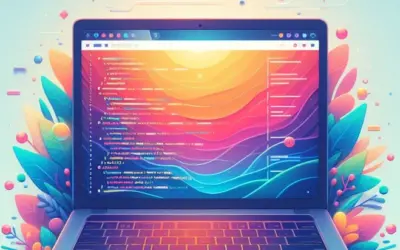In the dynamic realm of web design collaboration, being able to effectively communicate with your web designer is the cornerstone of your website’s success.
Whether you’re a seasoned client or diving into the digital world for the first time, understanding how to communicate with your web designer is pivotal.
This guide, tailored for discerning clients, offers insights to empower your projects.
Table of Contents
1. Share Your Vision Early
Initiate your project with a vivid exploration of your vision. Describe not just the aesthetics but the emotions and experiences you wish to convey. By sharing the core of your idea early on, you set a solid foundation for a collaborative journey where both parties are aligned toward a common goal.
This upfront investment in communication pays dividends as the project progresses, minimizing misunderstandings and ensuring your web designer captures the essence of your brand. Moreover, encourages an open dialogue.
Invite your designer to share insights and potential improvements. Effective communication is a two-way street, and the more both parties contribute to the exchange of ideas, the richer the creative output will be.
2. Transparent Collaboration
Transparency is the bedrock of effective collaboration. When it comes to budget, timeline, and expectations, foster an environment of openness. Clearly articulate your priorities so that your web designer can allocate resources accordingly.
This honesty lays the groundwork for a partnership built on trust, where both parties understand the parameters and can work collaboratively toward shared goals. Moreover, be receptive to your designer’s insights. They bring a wealth of experience to the table and can offer valuable perspectives that enhance the project.
A transparent collaboration, where information flows freely, ensures that challenges are identified and addressed promptly, leading to a smoother, more efficient design process.
3. Trust the Process
Empower your web designer to orchestrate both the visual and content elements. This trust in their expertise allows for a holistic approach, where design and content creation work in tandem.
When given creative freedom, designers often surpass expectations, crafting a digital presence that not only meets your requirements but also incorporates innovative elements that elevate your brand. Additionally, engage in open communication about your business, brand, and target audience.
The more your designer understands the intricacies of your enterprise, the better they can tailor the design to align with your unique identity. Trusting the process involves recognizing the symbiotic relationship between your insights and the designer’s creative expertise.
4. Planning Prevents Rushing
Avoid the pitfalls of rushed deadlines by embracing a strategic planning approach. Allocate time for contemplation and exploration of the big picture and finer details. Adequate planning not only prevents last-minute scrambles but also allows your web designer the mental space to refine the design concept, resulting in a more thoughtful and effective final product.
Furthermore, involve your designer in the planning discussions. Their input during the initial phases ensures that the design aligns seamlessly with your overall goals. A collaborative planning process sets the stage for a project that unfolds smoothly, with each element thoughtfully considered.
5. Streamlined Feedback Process
Design by committee can be challenging to navigate. Establish a single point of contact for feedback to streamline the revision process. This ensures that feedback is consolidated, coherent, and actionable.
Clear, organized feedback expedites revisions, preventing delays and fostering a more efficient design workflow. Encourage your designated contact person to collate insights from various stakeholders before presenting them to the design team.
This curated feedback approach minimizes conflicting opinions and allows for a more focused and productive revision process.
6. Information Organization
Effective communication relies on organized information. Consolidate updates and information, presenting them in a clear and structured manner. This not only expedites content updates but also minimizes disruptions caused by scattered communications.
A well-organized information flow allows your web designer to stay focused on the task at hand, resulting in a more efficient design process. Consider creating a centralized platform for communication and updates.
Whether it’s a project management tool or a shared document, centralization reduces the risk of information getting lost in email threads, ensuring that your web designer has quick access to the information needed for the task at hand.
7. Clear Communication of Edits
When presenting edits, clarity is paramount. Instead of specifying detailed design changes, focus on articulating the problem or desired outcome. For instance, express the need for certain elements to stand out more or for a particular section to evoke a specific emotion.
Clear communication of edits allows your web designer to apply their expertise in translating your feedback into cohesive design improvements. Consider providing context for the edits.
Explain how the proposed changes align with your brand identity or business goals. This not only enriches the collaboration but also ensures that design revisions are purposeful and contribute to the overall effectiveness of your web presence.
8. Continuous Learning
Embrace a mindset of continuous learning in your collaboration with your web designer. Actively seek to understand the reasoning behind design decisions and how they align with broader goals such as user experience, brand positioning, and business objectives.
By engaging in a learning process with your designer, you not only maximize the value of the collaboration but also contribute to a more informed and strategic approach to your digital presence. Encourage open discussions about design choices. Your curiosity and insights can spark valuable conversations that lead to innovative solutions.
A collaborative learning environment ensures that both you and your web designer evolve together, creating a digital presence that not only meets current standards but also anticipates future trends.
Choosing Dytatek: Where Collaboration Meets Innovation
In summary, effective communication is not just a necessity; it’s the catalyst for exceptional web design. By embracing these principles, you’re not just collaborating; you’re orchestrating a symphony of creativity and functionality.
When you choose Dytatek for web design, you’re choosing a partner that understands these principles and goes beyond – where collaboration meets innovation.




